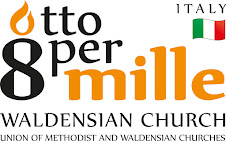This report was commissioned by GLOBAL 2000 / Friends of the Earth Austria and financed by the Wiener Umweltanwaltschaft (Vienna Ombuds Office for Environmental Protection).
Executive Summary
5 million people in Belarus, Ukraine and Russia still live in highly contaminated areas
400 million people in less contaminated areas
37% of Chernobyl’s falloutdeposited on western Europe; 42% of western Europe contaminated
40,000 fatal cancers predicted
6,000 thyrod cancer cases to date, 16,000more expected
increased radiogenic thyroid cancers now seen in Austria
increased radiogenic leukemia, cardio vascular disease, breast cancers confirmed
new evidence of radiogenic birth defects, mental health effects and diabetes
new evidence that children in contaminated areas suffer radiogenic illnesses
Belarus, Ukraine and Russia were the most highly contaminated countries. About5 million people still live in areas with very high levels of radioactive contamination (Cs-137 >40 kBq/m2) in Belarus (18,000 km2), Ukraine (12,000 km2) and Russia (16,000 km2). 400 million people live in areas contaminated with lower levels of radioactivity (4-40 kBq/m2).
42% of Europe’s land area was contaminated. Western Europe (defined as all European countries excluding Belarus, Ukraine and Russia) received 37% of Chernobyl’s fallout accounting for about
40% of Chernobyl’s collective dose to the northern hemisphere.
It is estimated that 40,000 fatal cancers will arise over the next 50 years, similar in magnitude to the toll from the Japanese bombs in 1945. 6,000 thyroid cancer cases have arisen so far and 16,000 more cases are estimated to arise over the next 50 years. New evidence indicates increased thyroid cancer cases in Austria, similar to indicative studies in other countries.
Increased surveillance, diagnoses and medical exposures to radio-iodines are partial causes but up to 40% of increased TC cases after 1990 in Austria may be due to Chernobyl. New evidence, including quantitative risk estimates, buttressprevious indicative studies of increased leukemias, solid cancers, cardio vascular effects, mental health effects, birth defects and other radiogenic effects in the most affected countries. Persuasive evidence demonstrates continuing ill health among children in highly contaminated areas due to the ingestion of contaminated food.
Visits abroad are of considerable benefit to Chernobyl-affected children. Recommendations are made for the European Commission and national Governments to adopt humanitarian policies to alleviate the continuing plight of children affected by Chernobyl. They should also support existing non-government organisations and medical charities which help these children with visits abroad.
30 years after the accident, humanitarian help is still needed for the children of Chernobyl. Recommendations are made for the European Commission and national Governments to fund proposed research programmes to assess Chernobyl’s long term effects, including the establishment of registries to monitor increasing cancer incidences in Europe
Data: marzo 2016
Fonte: www.ianfairlie.org




















Nessun commento:
Posta un commento